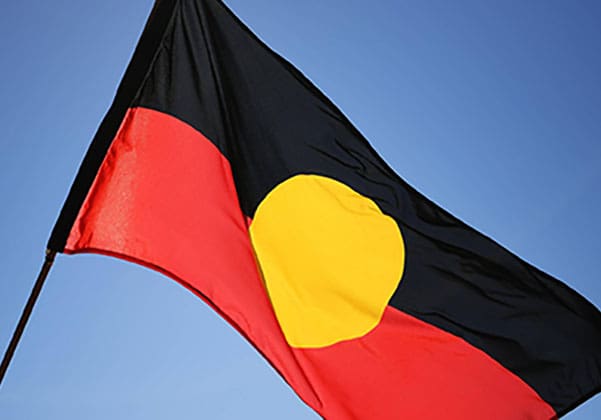Prime Minster Scott Morrison’s recent comments denying the existence of slavery in Australia reveal a sobering truth about Australia’s ruling class: they are unconcerned with confronting the persisting trauma and oppression of Torres Strait Islander and Aboriginal Australians. Not only does this denialist rhetoric prevent political action needed to alleviate systemic Indigenous burdens, it disregards the condition and suffering of a people who nurtured a country we now inherit for millennia. Acknowledging responsibility is by no means an easy task, but attempts made by South African anti-apartheid administrators during the mid 1990s to exact justice and amnesty provide a cooperative starting point: the truth must be nationally recognised.
The common inference of South African history sees the election of Nelson Rolihlahla Mandela in May 1994 as the day which definitively and unquestionably vanquished the scourge of the Apartheid complex. Excluded from dialogue surrounding the complicated South African narrative is how modes of dismantling trauma were used to (theoretically) confront the past and implement restorative, instead of punitive justice to victims of a barbaric racial system. Lesser known figures of post-Apartheid administration Alex Boraine and Sisi Khampepe (alongside others) effectively established a commission of truth and eventual “reconciliation” (also known as the TRC) in 1995.
The party of the nation’s liberation, the African National Congress (ANC), did not seek to trial, punish and shame its former oppressors. Neither were their crimes ignored. After fusing three human rights committees, international law and human rights violations committed by the National Party (NP) government since its election in 1948 were publicly addressed, acknowledged and denounced in a lengthy series of nationally televised hearings.
High ranking officials of the Apartheid secret police (or “Bureau for State Security”) were interrogated and encouraged to publicly apologise for the brutal torture and death of political activists in custody. In a notorious case, six officials of the Bureau responsible for the murder of the Cradock Four were made to demonstrate methods of torture and vividly recollect their crimes.
Eugene de Cock, commander of the counterinsurgency unit Vlakplaas, was subpoenaed by the commission. Without his testimony and admittance of guilt, stories of numerous “erased lynchings” would never have been brought to light, nor etched into national consciousness. Eugene de Cock was granted full amnesty as reward for transparency. The six Bureau agents’ pleas for absolution were denied. In this way, the TRC laid bare the savagery of Apartheid.
In Australia, despite what Morrison may espouse, First Nation peoples and South Pacific Islanders were forced to labour on sugar plantations on the north-east coast and livestock properties throughout the country. These enslaved workers effectively enabled the cattle and farming boom in rural Australia. Indigenous people have been displaced en masse in a long-term scheme which replicates Apartheid legislature that annexed non-white properties and farmsteads, relocating 90% of black South Africans into desolate, designated ‘homelands’. Australia’s (continuing) child removal policy has seen generations of Indigenous children abducted from their parents. Eugenic practices legitimised by “anthropological” journals, charting racial spectrums and supporting ethnic assimilation, persisted throughout white occupation.
The ghosts of the past haunt our present, as they do in modern-day South Africa, and colonial practices continue, as evident in the incarceration rate of Indigenous citizens. But recognising our country’s history of racialized enslavement, murder and marginalisation is the first step. Thereafter, government-sanctioned bodies must investigate and provide factual narratives about our past. They should encourage reparations.
Various Australian NGOs and not-for-profit groups have initiated processes not dissimilar to the Mandela administration’s with limited success. Reconciliation Australia, established in 2001, “promotes and facilitates reconciliation by building relationships, respect and trust” between Indigenous and non-Indigenous Australians. Through organisational and media influence and legal advocacy, Reconciliation Australia seeks to influence government policy.
The Referendum Council, a state-appointed legal panel which sought to advise the government regarding constitutional reform, held two years-worth of dialogue with traditional owner groups. They made numerous suggestions to the Turnbull government in 2017. Among the recommendations was the abolition of section 25, which grants states the ability to exclude a racial group from elections (a ‘dead letter’ due to the Racial Discrimination Act). Other proposed constitutional amendments included the enabling First Nations people to advocate directly to Parliament through section 116A.
In response to the Uluru Statement, the Turnbull government claimed that additions to representative institutions was neither desirable nor capable of winning acceptance in a referendum, and the government did not remove section 25.
Consistent undermining of Indigenous histories inhibits even the most incremental constitutional amendment. If we are to truly commit to the reconciliation of our fellow black Australians, we must pursue the truth first. With the Morrisson administration only further trivialising racial trauma, clearly a greater shift must occur in the Australian psyche.
As Mandela would say, “reconciliation is a spiritual process, which requires more than just a legal framework. It has to happen in the hearts and the minds of people.”





